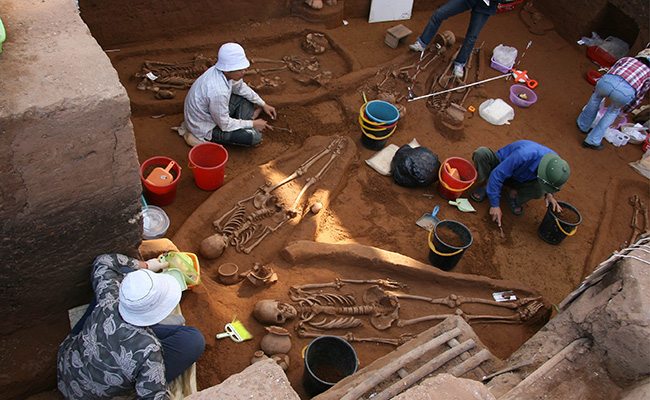While it is easily curable in its early stages today, and is almost eradicated, the bone disfigurements are irreversible. Yet 4,000 years ago there was no treatment and a new study looked at skeletal remains from the Man Bac archaeological site, excavated in 2005 and 2007, in the Ninh Bình Province of Vietnam. After seeing what might be yaws on a photograph of Man Bac remains, a team of experts confirmed it - and University of Otago graduate student Melandri Vlok found a second example of the disease.
Yaws is from the same bacteria species responsible for syphilis (Treponema pallidum) and has been eradicated in much of the world but is still prevalent in the Western Pacific, affecting some 30,000 people. The length of time the disease has existed shows how hard it has been to eradicate but this is the first strong evidence for yaws in prehistoric Asia, and speculation is that it was was introduced to hunter-gathers in present-day Vietnam by an agricultural population moving south from modern-day China. These hunter-gathers descended from the first people out of Africa and into Asia who also eventually inhabited New Guinea, the Solomon Islands and Australia.

Farmers had been in China for at least 9,000 years but it wasn't until around 4,000 years ago that farming made its way to Southeast Asia.
This year's COVID-19 pandemic has focused people's attention on infectious diseases, and there are lessons to be learned from the past, Ms. Vlok says.
"Archaeology like this is the only way to document how long a disease has been with us and been adapting to us. We understand with COVID-19 today how fantastic that disease is at adapting to humans. And Treponema has been with us for so much longer. So, this shows us what happens when we don't take action with these diseases. It's a lesson of what infectious diseases can do to a population if you let them spread widely. It highlights the need to intervene, because sometimes these diseases are so good at adapting to us, at spreading between us."




Comments